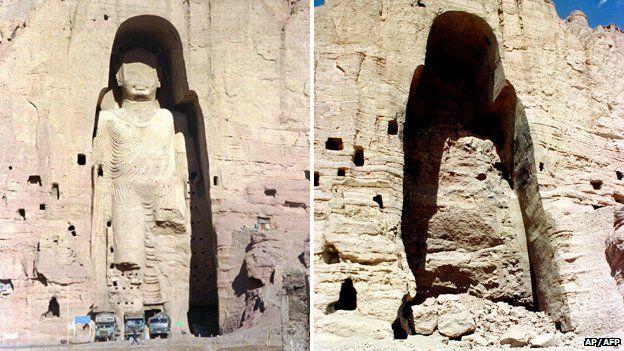Bamiyan Buddhas

Copyright infringement is not intended
Context: The Taliban regime in Afghanistan has said it would protect the ancient Buddha statues in Mes Aynak, also the site of a copper mine where the Taliban are hoping for Chinese investment.
- The Taliban’s position is in marked contrast to the time they ruled Afghanistan earlier, when they brought down the centuries-old Buddha statues in Bamiyan using artillery, explosives, and rockets.
- The apparent change of heart over the Mes Aynak statues seems to be driven by economic interests, with the regime in desperate need of the income Chinese investment in the copper mines could generate.
Bamiyan Buddhas
- In their Roman draperies and with two different mudras, the Bamiyan Buddhas were great examples of a confluence of Gupta, Sassanian and Hellenistic artistic styles.
- They are said to date back to the 5th century ADand were once the tallest standing Buddhas in the world.
- Salsal and Shamama, as they were called by the locals, rose to heights of 55 and 38 metres respectively, and were said to be male and female. Salsal means “light shines through the universe”; Shamama is “Queen Mother”.
- Bamiyan is situated in the high mountains of the Hindu Kush in the central highlands of Afghanistan.
- The valley, which is set along the line of the Bamiyan River, was once integral to the early days of the Silk Roads, providing passage for not just merchants, but also culture, religion and language.
- When the Buddhist Kushan Empirespread, acting as a crucible of sorts, Bamiyan became a major trade, cultural and religious centre. As China, India and Rome sought passage through Bamiyan, the Kushans were able to develop a syncretic culture.
https://indianexpress.com/article/explained/everyday-explainers/explained-what-were-the-bamiyan-buddhas-and-why-did-the-taliban-destroy-them-7844925/



1.png)
